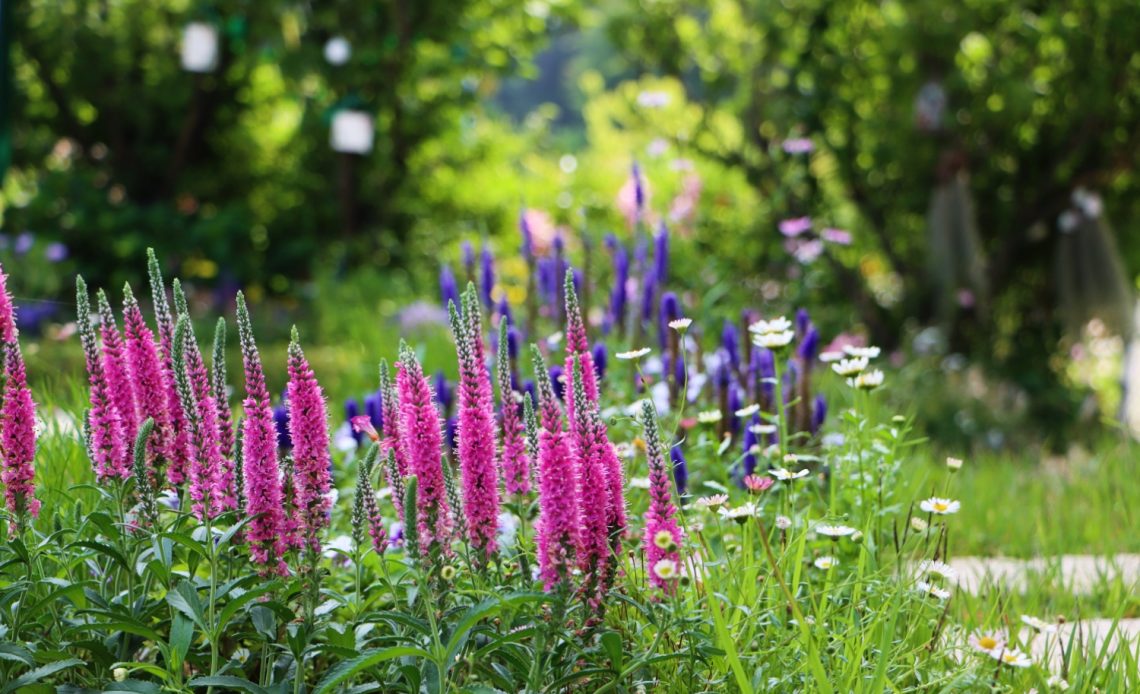

We’re here to help! Wild Yards is a completely free website that is 100% dedicated to helping you create a wildlife-friendly, sustainable yard. Read more
WildYards is reader-supported. When you buy a product through a link on our site, we may earn a comission. Every product is independently selected by our (obsessive) editors and our reviews are unbiased and objective. Read more about our mission or our privacy policy.
Many of the ornamental plants favored by landscapers grow best when planted in morning sun. Hydrangeas, azaleas, and peonies, for instance, thrive when they can receive a few hours of early light, and be well in the shade during the hottest part of the day. But not every garden receives morning sun. If your backyard gets shade in the morning, and sits in the blazing sun all afternoon, you may be wondering which afternoon sun plants can survive such harsh conditions.
Salvia, coneflower, vinca, and daylilies are tough flowering plants that thrive when planted in afternoon sun. Other plants that can take the heat include Mexican petunias, speedwell, and four o’clocks.
11 Best afternoon sun plants for your backyard landscaping
Just because you have a hot, sunny backyard doesn’t mean the landscape has to be barren. Check out these amazing afternoon sun plants that will add instant curb appeal to your outdoor space.
Vinca
Also known as periwinkle, vinca is native to Europe and parts of Africa. Although perennial varieties exist, most vincas grow as annuals. Here in the United States, vinca can be grown from zones 4 through 9. Plants grow from 6 to 18 inches tall and are tolerant of the afternoon sun.
Vincas grow best in rich, loamy soils that can easily be kept moist, but that also drain well. These flowers are a popular choice for foundation planting and flower beds because their mounding nature makes them a great ground cover. Even though most vincas are annuals, these plants spread vegetatively, so they can easily return year after year.
These pretty, unpretentious flowers come in shades of white, pink, red, and purple, and look a lot like impatiens. Vincas are especially popular with butterflies and moths, who can easily reach the flowers’ nectar stores with their long proboscises. Vincas would make a worthy addition to your sunny pollinator garden.
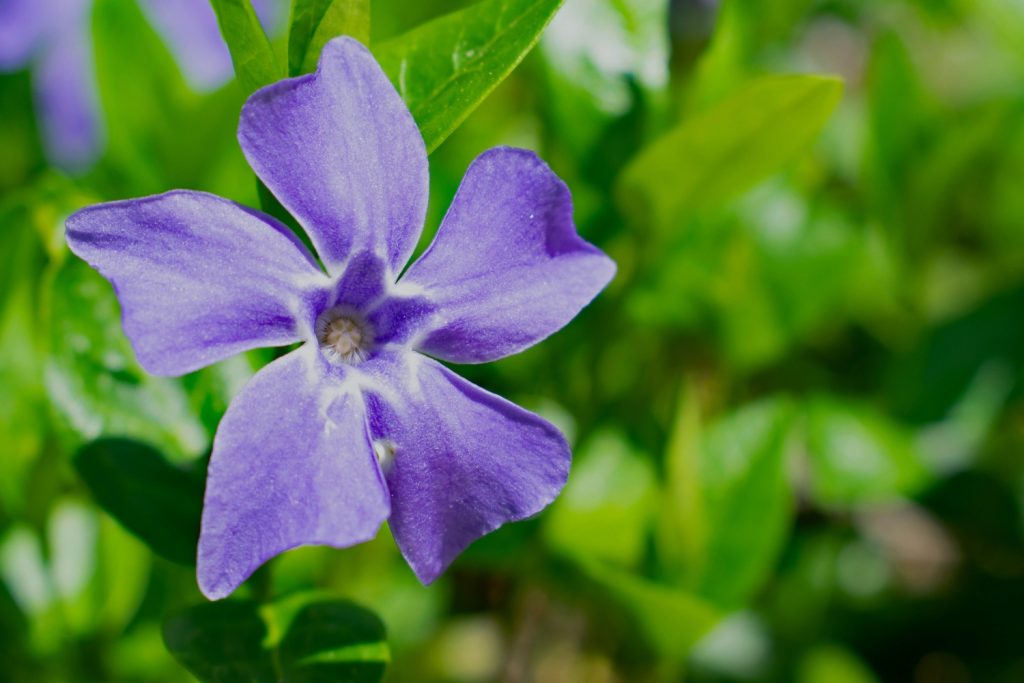
Speedwell
Also called Veronica, speedwell is another afternoon sun plant to consider adding to your garden. This flowering perennial is hardy from zones 3 to 8 and is a great option if your native soil is sandy and tends to dry out quickly. Speedwell reaches maximum heights of 3 feet, spreads up to 2 feet, and produces long flowerheads in white, pink, blue, and purple in spring and fall.
Speedwell resembles Russian sage, with dense green foliage situated mostly at the base of the plant. Flowers emerge on tall stalks that tower over the low growth. This makes the flowers easy for passing hummingbirds to spot. The flowers are especially popular with pollinators thanks to their abundant supply of nectar.
If you’re looking for afternoon sun plants, speedwell will work well for your garden. These plants can take care of themselves but should be deadheaded regularly during the flowering season to encourage the plants to bloom.
Egyptian Star Flower
You may know Egyptian star flower by another name: pentas lanceolata. Whatever you choose to call it, this plant is a breeze to grow in sunny gardens and can thrive in those ultra-hot spaces where other plants can’t survive. Egyptian star flower is hardy from zones 10 to 11 as a perennial and can be planted as an annual from zone 8 up.
Egyptian star flower produces clusters of star-shaped flowers (no surprise there). Flowers can be white or purple but are often seen in shades of pink and red. Egyptian star flowers usually grow 1 to 3 feet tall, although some cultivars can reach maximum heights of 6 feet. Plants typically have a 1 to 3-foot spread.
For best results, plant your Egyptian star flower in well-draining soil that is rich in organic matter. If your native soil is nutrient-poor, add a healthy dose of homemade compost to loosen things up and add valuable nutrition. Feeding the plants during the blooming period can prolong flowering.
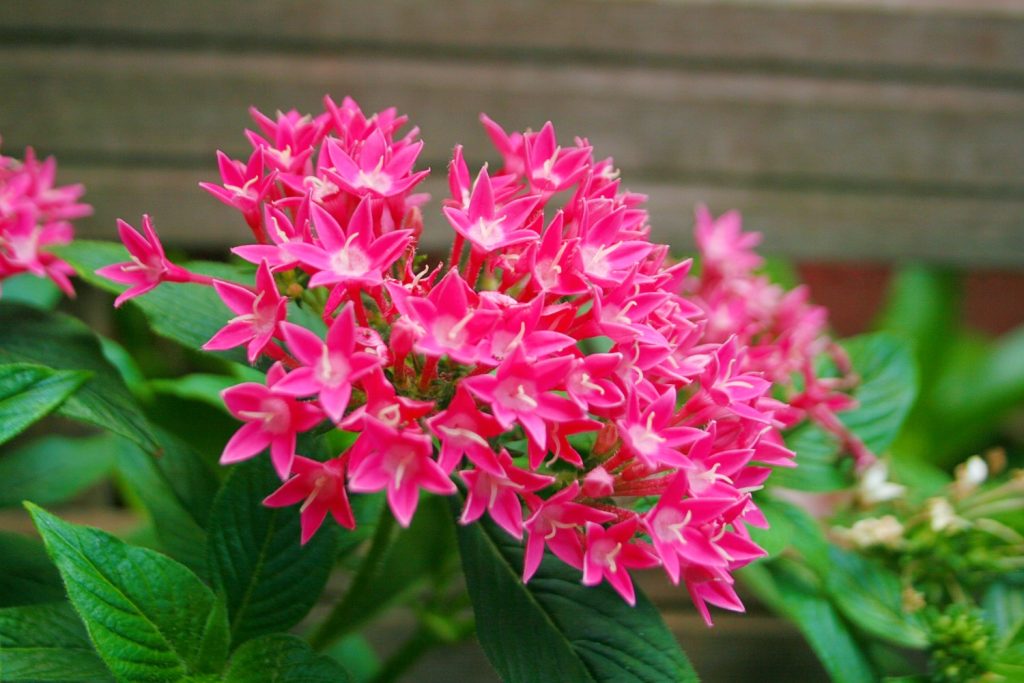
Lantana
A common fixture in southern landscapes and pollinator gardens, this is one plant that can take the heat and keep on truckin’. Lantana produces fragrant flower clusters, which are often white, pink, orange, and yellow — however, hybridized purple varieties do exist. Lantana can be found growing as a perennial from zones 8 through 11 but can be grown from zones 2 through 7 as an annual.
Lantana is the perfect afternoon sun plant for gardens that bake during the hottest part of the day. These plants are incredibly drought-tolerant once established. And, although plants may benefit from spring and midsummer feedings, lantana is quite capable of performing well in nutrient-deficient soils, too.
The more sunlight your lantana gets, the more flowers it will produce. In ideal conditions, your lantana will grow 4 to 6 feet tall by 2 to 4 feet wide. Choose Bandana ‘Pink’ Lantana and Bandana ‘Cherry’ Lantana varieties to color-coordinate your garden.
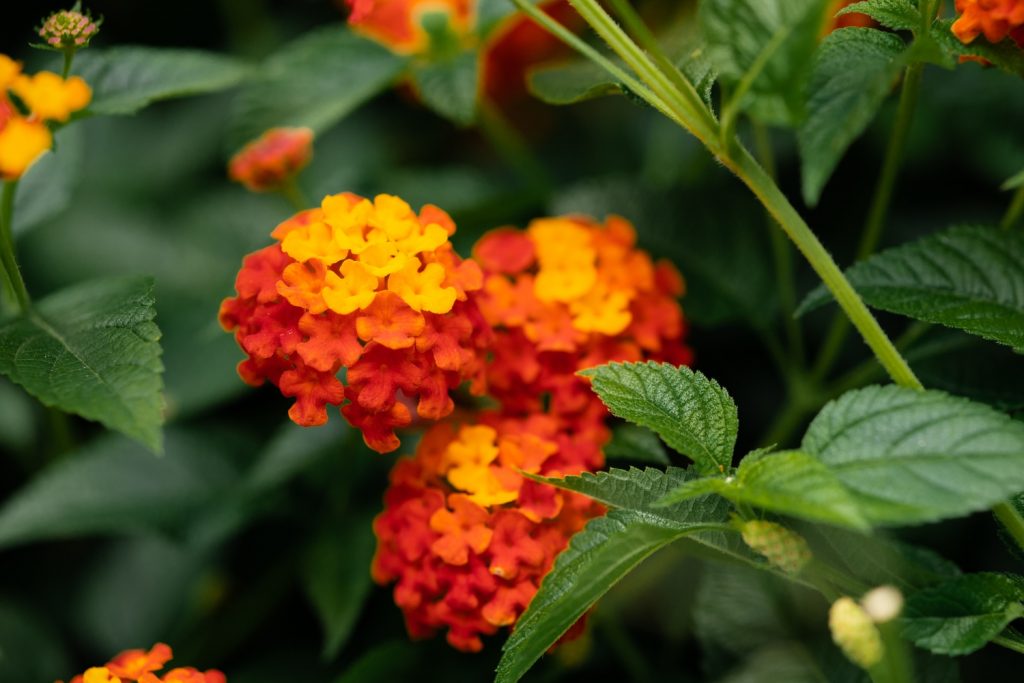
Coneflower
Some people think coneflowers are plain Jane and boring, but that couldn’t be further from the truth! These stunningly simplistic flowers come in all sorts of colors. From the vibrant ‘Cheyenne Spirit’ to the subdued ‘PowWow White’, there’s a coneflower to fit every landscape, and they’re so easy to grow — even in the afternoon sun!
Also called echinacea, coneflowers can be grown from zones 3 through 9. These plants are easy to maintain in warm climates, where they grow as perennials. In cooler regions, plants grow as annuals and need to be replaced every year.
If you decide to add this afternoon sun plant to your garden, you’ll need to amend your soil with some compost or manure. Coneflower performs best in fertile, yet well-draining soil. Keep the plants well-watered during the first month or so following transplanting. But, after that, they should be pretty drought-tolerant.
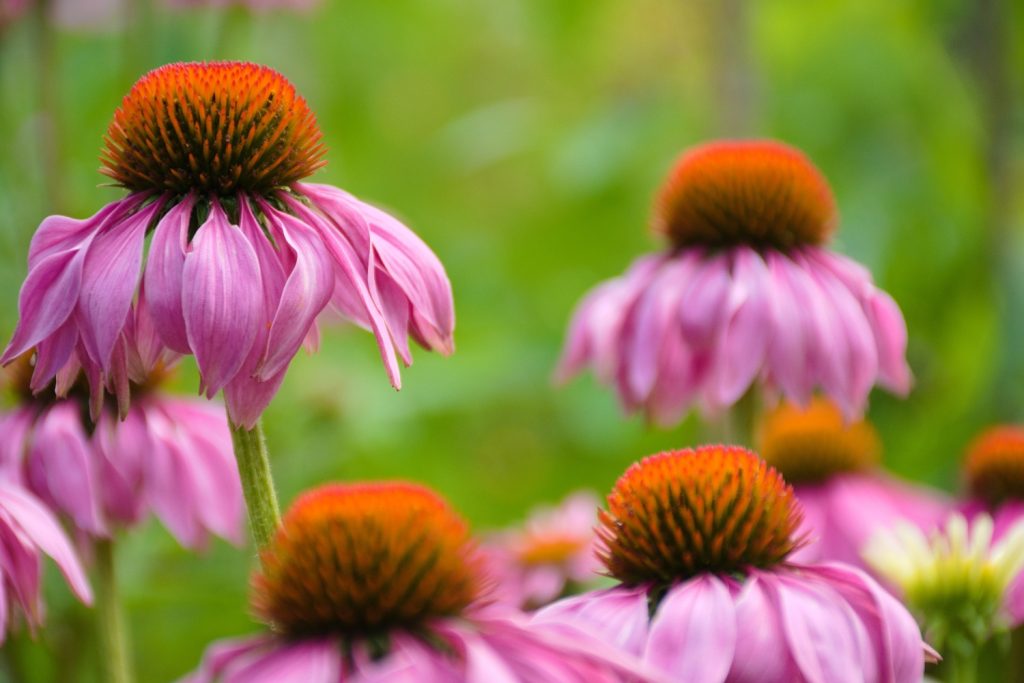
Mexican Petunias
You’ll fall in love with the Mexican petunia’s pretty purple flowers, deep green foliage, and incredibly easy-going nature. These flowers can grow up to 4 feet tall by 3 feet wide. These perennials spread like wildfire in moist, loamy soil when planted in zones 8 through 11.
Mexican petunias are native to (where else?) Mexico, where they thrive in the heat and humidity. For best results, add some organic materials to the soil before planting. This will make it easier to keep the plant’s roots moist. Mexican petunias grow fast in moist soil, but avoid overwatering them, as this can lead to root rot.
Mexican petunias bloom from spring to fall. You can prolong the blooming period by deadheading the plants regularly. If you’re looking to bring more wildlife to your yard, Mexican petunias can help you attract butterflies, bees, hummingbirds, and even deer, who love to munch on the plant’s tender new growth. If you want to keep the deer out of your Mexican petunia patch, consider spraying them down with homemade deer repellent.
Salvia
When your garden gets afternoon sun, it can be tough getting plants to survive. You probably feel like you have to baby your ornamentals just to get them to live. If you want a pretty plant that can tolerate afternoon sun without having to be coaxed, salvias are right for you. These plants are hardy from zones 5 through 10, and most varieties can be grown as perennials in warm regions.
Salvias come in so many gorgeous colors. Whether you choose the vivid ‘Saucy’ Red Salvia, the delicate ‘Azure Snow’ Salvia, or the timeless ‘May Night’ Salvia, you can’t go wrong. Salvias grow best in sandy to loamy soils that drain well. These plants have low water needs once established, so they’re perfect for arid regions.
As with most other flowering plants, your salvias will benefit from regular deadheading. Feeding the plants in the spring and summer can also encourage the plants to bloom. Salvias are rich in nectar, so they’re a perfect addition to pollinator gardens, too.
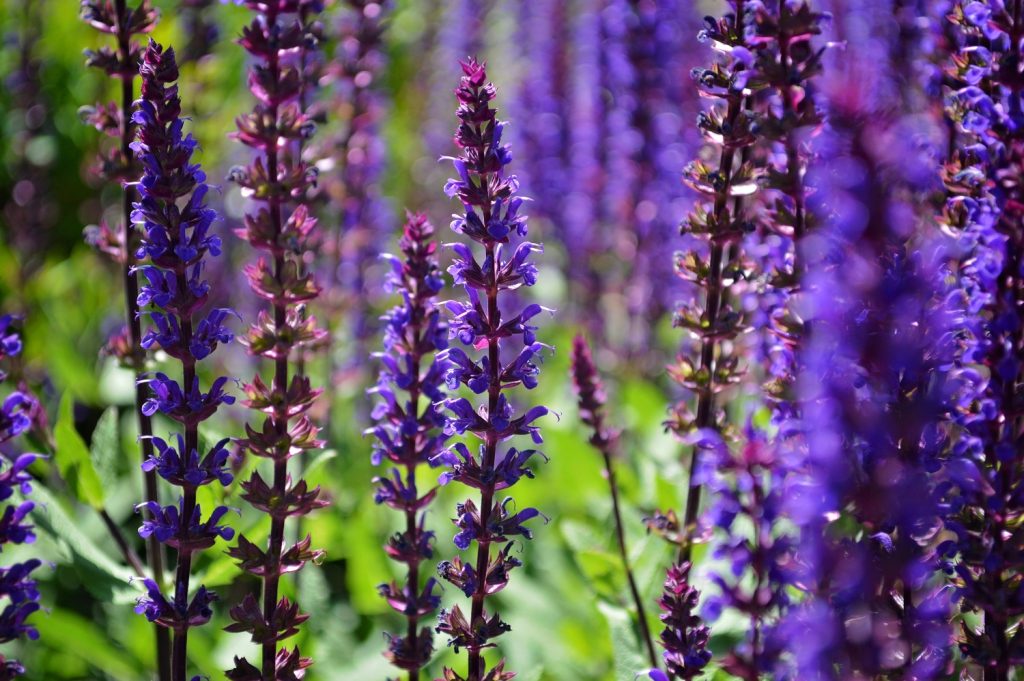
Daylilies
Dress up the sunny spots in your garden with daylilies. These fuss-free flowers are unstoppable in the afternoon sun, and their enchanting blossoms come in a variety of colors, so there’s something for every space. Choose purple ‘Strutters Ball’ Daylilies for an unconventional look, or plant classic colors like yellow ‘Spellbinder’ and soft white ‘Sunday Gloves’ varieties, instead.
Daylilies grow best in fertile yet well-draining soil but can tolerate sandy loams, too. Feed your plants in spring and summer to make sure they have all the energy they need to bloom. Most daylilies can be grown as perennials from zones 3 through 9, and plants grow roughly 4 feet tall by 3 feet wide at the most.
Once established, daylilies spread quite easily. So much so that many people consider them to be invasive. Fortunately, they’re easy enough to control. Just remove them if they encroach on any areas where they don’t belong. New plants are easy to start from the roots.
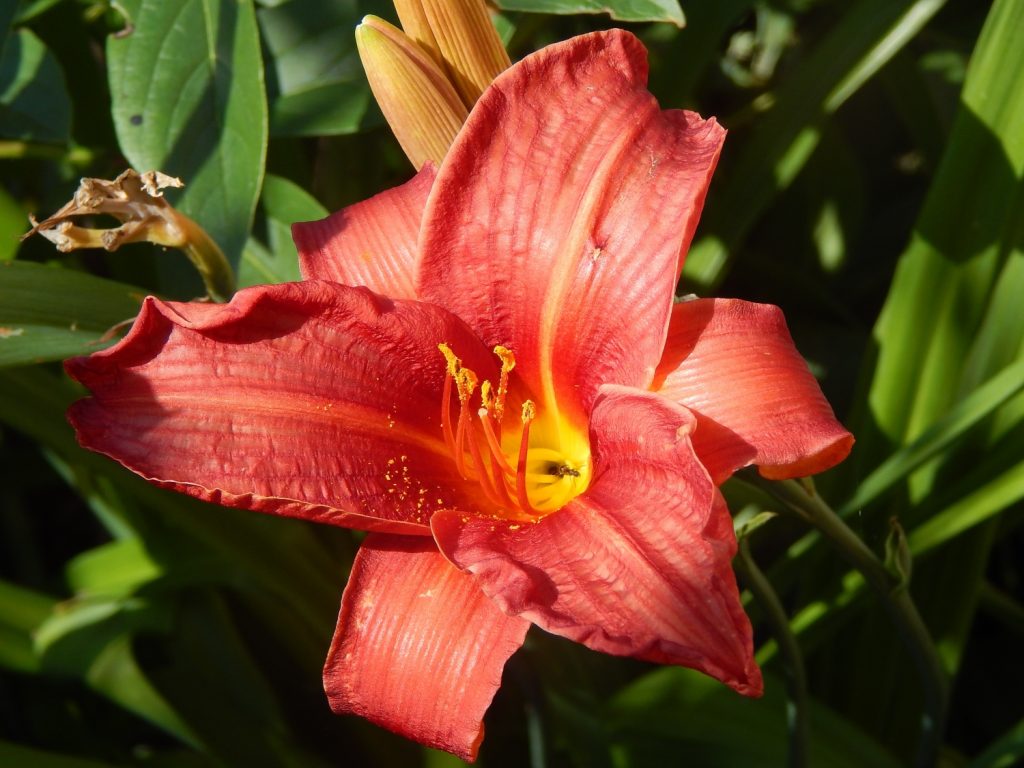
Hibiscus
Who doesn’t love these tropical beauties? Hibiscus plants thrive in afternoon sun, and can be grown as perennials from zones 9 through 11, although some cultivars are hardy all the way down to zone 4. Hibiscus plants grow best in nutrient-rich, well-draining soil, and are somewhat drought-tolerant once established.
In ideal conditions, most hibiscus cultivars reach 6 to 8 feet tall by 4 to 6 feet wide. However, some hibiscus can reach 20 feet tall or more — so make sure to give these plants plenty of room to grow! Regular feedings and deadheading can improve bloom color and quality.
Pretty pink Moonshadow ‘Rosita’ Hibiscus is dainty enough for sunny tea gardens, and ‘Luna White’ looks perfect as an accent shrub for suburban landscapes. But who can resist the blood-red Moonshadow ‘Carmine’ and juicy orange ‘Double Peach’ varieties? These gorgeous blossoms are perfect for landscaping around ponds and swimming pools.
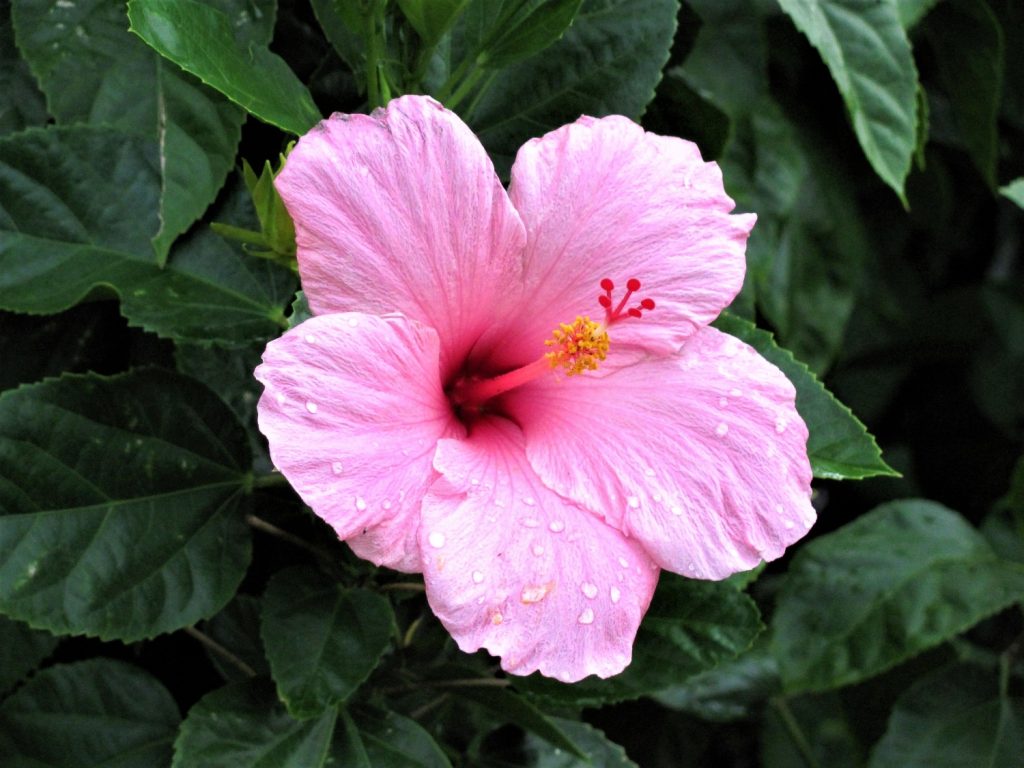
Four O’Clocks
So-called because their flowers tend to open late in the afternoon, four o’clocks reach 2 to 4 feet tall by as many feet wide at maturity but can spread on their own rapidly when planted in afternoon sun and loamy, well-draining soil. If you have some empty flower beds that you need to fill fast, four o’clocks can help you out, no sweat.
Four o’clocks create flowers of multiple colors on the same plant. You’ll see vibrant pink, red, white, and yellow blossoms on a single shrub. These vivid flowers produce a tantalizingly sweet scent that will make your garden irresistible to bees, butterflies, hummingbirds, and any other passing pollinators.
These plants do not require regular feedings, though they may benefit from a dose of compost every once in a while. Four o’clocks grow best in warm climates, specifically 9 through 11, where they can be grown as perennials. In cooler regions, like zones 4 through 8, plants may only grow as annuals.
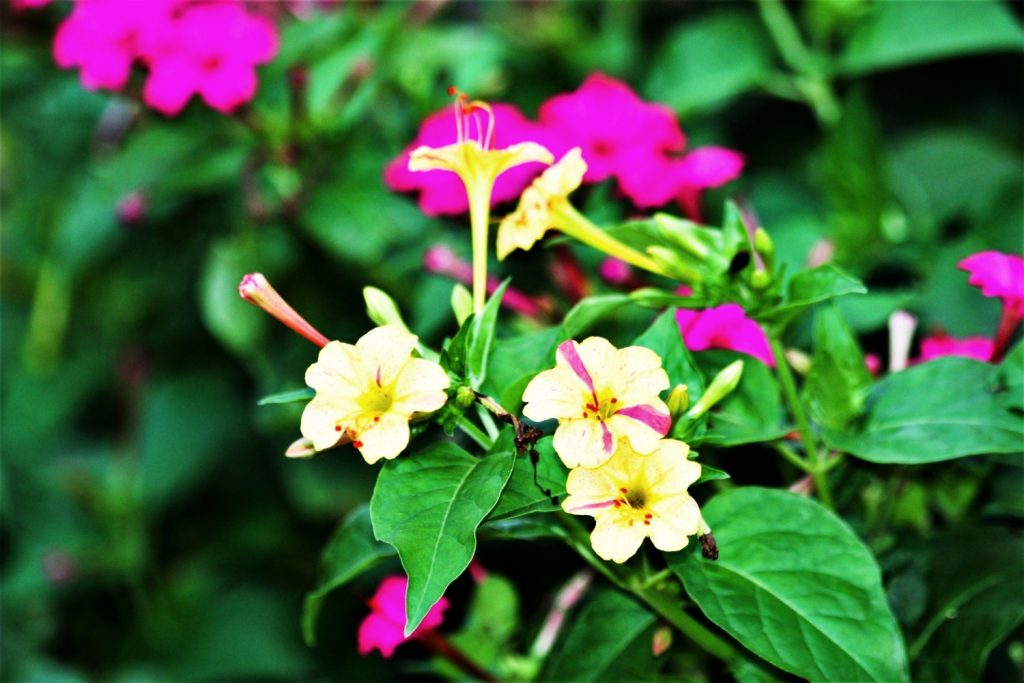
Crape Myrtle
If you’re looking to dress up your sunny backyard, and maybe add a bit more shade to it, too, plant a few crape myrtles. Also known as the “lilac of the south’, crape myrtles are incredibly heat-tolerant, and have low water needs once established. These fast-growing shrub trees have paper-like exfoliating bark and produce clusters of delicate flowers that are popular with bees and other pollinators.
Crape myrtles can be grown from zones 7 through 9 and can reach 30 feet tall by 20 feet wide at maturity. Dwarf varieties, like ‘Best Red’ and ‘Mystic Magenta’ are also available, and they’re perfect for small spaces. Crape myrtles can survive humid climates, as well as sunny ones, so they’re a great landscaping option for those tight, poorly ventilated areas.
Crape myrtles are tolerant of a variety of soil types, from sandy and nutrient-poor to loamy and fertile. Amending your soil with some compost can encourage the plants to produce healthy foliage and plenty of blooms. Crape myrtles come in red, pink, white, and purple varieties, and are a perfect choice for any sunny garden.
Tips for growing afternoon sun plants
As you can see, there are plenty of gorgeous plants that can tolerate afternoon sun. To maximize your plant’s chances of success, be sure to meet all of its soil and water requirements. If you find your plants are wilting in between waterings, spread a layer of wood chip mulch or plant an afternoon sun-tolerant ground cover like creeping thyme to prevent rapid hydration loss.
Depending on which plants you choose, they may also benefit from annual pruning. Shaping plants by removing dead, misshapen foliage promotes new healthy growth later on. Research your plant cultivars to find out exactly how to care for them so you can turn your hot, sunny backyard into a glorious oasis.
